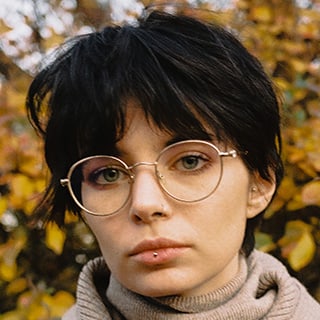Creating a basic video: pre-production
Projects with short deadlines and a simple message are made solely by Dodo's creative team. Developing a video starts with pre-production.
Pre-production is a stage where it is crucial for us to take into account all the nuances of the filming process. A quality preparation facilitates the filming process and subsequent processing of the footage.
At this point we develop a script, gather a team, choose a location and props, clarify the requirements for the video, prepare all the documents, draw up timings and approve the idea.
Script
The creator is responsible for developing the idea and writing the script, but the director and other team members may be involved in the task as well. Here is what the script consists of.
- References. Always provide references for everything, from ideas to makeup. The more references, the better.
- Storyboarding. The creator or producer makes a thorough visualization of their idea, either by themselves or with the help of a designer, director, or other team members. In this storyboard, the director displays the sequence of actions, as well as the motive for the actors' motions and the props appearing in the frame.
- Timing. The whole team must know exactly what exactly the clip duration is, as well as the timing of each scene. The creator designates the timing in the script.
- Product shot. If we plan to display a product in the video, we should notify our photo lab 7-10 working days in advance. Thus the team will have enough time to order ingredients and book a food stylist. Simultaneously with that, the designer thinks through the composition and decides on all the necessary props.
- Voice-over narration. If the video requires voice-over narration, we need to record it in the studio in advance, so that it will be easier to film and edit the video sequence. The creator approves the text before filming begins.
- Background music. In the process of script preparation, the creator makes a decision on whether background music is required and puts this information into the script. We can use available tracks, voice-over, select voice-over artists and make payment for music tracks with the help of our sound producer.
- Animation. If the script requires animation, the creator calls for the designer and motion designer at an early stage. The composition is prepared by the designer in .png format, the motion designer just does their job animating it.
Team, location, props
We think of the location through, select actors and props, book equipment and make a pre-shoot to save time on set and take all the risks into account.
- Location. The director decides where the video will be filmed and the designer approves the locations. Once we have found the location, we notify the photo lab team to schedule the filming date, book the location and rent equipment.
- Actors and models. The casting is handled by the creator or director. We search for models in telegram channels, with the help of agents, in social media groups, casting platform Kinolift or in the internal database of the Creative Team. Sometimes we turn to the photo lab and search among those with whom we have already worked. We take into account the complexity of the role: if the plot is simple, and the character in the frame performs a minimum of acting, we hire a model; for complex roles with words we go for professional actors.
- Characters' looks. The creator makes general characters’ descriptions and how they look. The director agrees the creator’s vision, as well as provides their expectations for makeup. The designer works out all the details of the characters’ looks.
- Props. The creator notifies the team members about the necessary props, the designer works out the details, and the prop designer selects and buys the props over the course of 3-7 working days.
- Equipment. The decision on who exactly films the video, a videographer or a photographer, is made by the director. Either of them controls that there is a camera or smartphone on the filming site, as well as a stabilizer, lenses, stands, extension cords and other necessary equipment.
- If we plan to record the voice on the set, we take all the necessary equipment, a boom or a loop. We need to rehearse the lines with an actor before the filming starts. Models normally do not do the speaking.
- Pre-shooting. Sometimes the director or creator asks the actors to record auditioning in order to evaluate their performance and give recommendations. Designers also rehearse: they set up a shot in advance to determine the location of objects, actors and props.
Branding materials and legal information
We keep in mind branding and clarify the legal rules for the design of our commercials.
- Branding and product names. Ensure that the logo, product and brand names are comprehensible and catchy. If the final video does not have vivid and clear branding, it means that we have wasted resources, even if the video looks perfect from a technical and artistic point of view.
- Legal information and age restrictions. Before the filming process launches, the creator clarifies with lawyers and the owner whether it is required to place legal information in the video. If necessary, we request text in advance and pass it to the designer to make a layout with the mandatory information.
- Resizes. Prepare vertical and horizontal versions for each shot. The director and creator ensure the team to not skip this step.
Documents, timing, idea approval
This is the final stage of pre-production, where we solve organizational issues: plan the shooting day, sign contracts with contractors, and draw up the terms of reference for the photo lab team.
- Schedule and timing. The filming day is planned by the director, either personally by themselves or together with the designer. After that they notify the team about who and at what time is coming to the set, and how long the filming will take.
- Documents for models and contractors. The person who works directly with an actor or model is responsible for preparing documents: requesting all the papers, explaining the method of signing documents via Legium, passing the documents to the clerk for signature, entering the task for transaction and payment in Pyrus.
- Consistency with layouts and initial design. The creator makes sure that the idea of the video does not contradict the original project, and the designer controls that the visual part of the video corresponds with initial layouts and shows the product in the best possible way. Coherence and integrity of the visual presentation of the product is our priority.
- Final approval. Before filming, we present the idea to the owner in as much detail as possible. We also demonstrate treatment or storyboard with references.
- Terms of reference for the photo lab (treatment). The creator and designers prepare a TOR in which they describe the requirements for actors and props items. All materials are collected in one place, for example, on a board in Miro. 7 working days before the shoot, the director gives the TOR to the darkroom team.
Read next:

